10 historic places to visit in Columbia County
Published 11:00 pm Tuesday, June 10, 2025


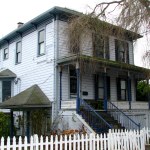
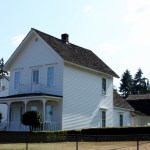
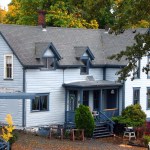




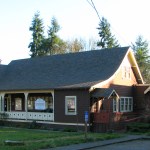
Columbia County’s pioneering roots are enshrined in numerous historic places.
From antique homes to ghosts of the timber industry, multiple sites in the county are recognized on the National Register of Historic Places. The register is the nation’s official list of significant places worthy of preservation. Sites must demonstrate historical significance to be added to the list.
Check out these 10 spots see Columbia County history come to life:
Watts House, Scappoose
Built in 1902, the Watts House is a jewel of Scappoose.
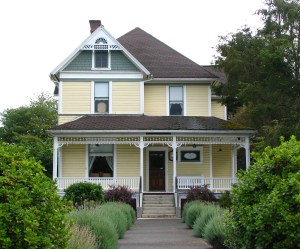
The Watts House is one of the oldest and best preserved historic homes in Scappoose. (National Register of Historic Places)
This charming yellow Queen Anne is situated near Heritage park at 52432 S.E. First St. It was built by Scappoose’s first mayor, James Grant Watts, who lived there with his wife until his death in 1956. His son, James Loring Watts, sold the home to the city of Scappoose in 1969 for $20,000.
The home is one of the oldest and best preserved historic homes in Scappoose. It was placed on the National Register of Historic Places in 1980.
Besides housing the Watts family, the home has served a number of purposes in its 120-year history. The building has housed the city’s public library, been used as a boarding house for teachers, headquartered city business as city hall, and, today, is a museum operated by the Scappoose Historical Society.
U.S. Post Office, Scappoose

The U.S. Post Office in Scappoose was built in 1966 and is an example of the Thousand Series buildings. (National Register of Historic Places)
The U.S. Post Office in Scappoose was built in 1966 during a transformative period for the USPS.
Prior to World War II, post offices were grander and meant to be symbolic extensions of the federal government. After the war, priorities shifted to efficiency and function as the USPS began to implement new technologies and develop systems like the ZIP Code.
This emphasis on pragmatism also influenced building architecture. Located at 52643 Columbia River Highway, the U.S. Post Office in Scappoose is an example of the USPS Thousand Series buildings, which were hallmarked by their smaller footprint and one-story, box-like structure.
The building was placed on the National Register of Historic Places in 2017.
Cox-Williams House, St. Helens

The Cox-Williams House in St. Helens is an example of late Victorian residential architecture. (National Register of Historic Places)
This home in St. Helens was placed on the National Register of Historic Places in 1982 as “the largest and most elaborate example of late Victorian residential architecture in the downtown core of St. Helens.”
Built in 1890, the home was moved a short distance from its original location in 1912 and has remained at 280 S. First St. since.
The Cox-Williams House was home to important figures in the development of St. Helens. It was built for Richard Cox, an accountant for the Muckle Lumber Company and Columbia County judge. His wife, Annie Muckle Cox, was the daughter of James Muckle, who co-founded the Muckle Lumber Company. The Coxes’ granddaughter, Alice Louise Cox Williams, was born in the house in 1897 and occupied it after the Coxes’ deaths.
Caples House, Columbia City
This mid-19th century Classical Revival home was built in 1870 and placed on the National Register of Historic Places in 2005.
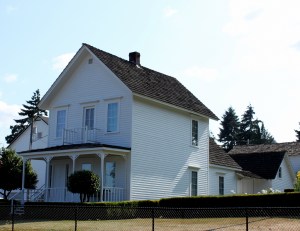
The Caples House in Columbia City is now a museum. (National Register of Historic Places)
Located at 1925 First St. in Columbia City, the Caples House was home to the first — and for many years the only — physician with medical training in Columbia County.
Dr. Charles Green Caples was born in 1832 and moved with his family from Missouri to Oregon in covered wagons in 1844. At age 17, Caples worked in a gold mine for a year, where he earned enough money to pay for himself and his sister to attend Tualatin Academy, now Pacific University, in Forest Grove.
In 1855, Caples married Lucinda McBride, who was the daughter of James McBride, a prominent doctor in Yamhill County. After marriage, Caples went to Portland to study medicine under another doctor and received his degree in 1857. Caples then set up his practice out of his home in Columbia City, where he and his wife tended to patients for many years.
Today, the home is a museum.
George Moeck House, Rainier
Built in 1888, this Classical Revival home in Rainier was home to George Moeck, a dairy farmer and two-time mayor of the city.
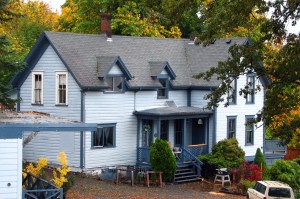
The George Moeck House in Rainier is an example of Classical Revival architecture. (National Register of Historic Places)
Located at 713 B St. West, the home is situated along the Columbia River. With 14 rooms, there was ample space for the couple’s six children as well as the occasional steamboat sailor in need.
Multiple businesses and restaurants have occupied the home over the years, and the home was placed on the National Register of Historic Places in 1978.
Lewis and Clark Bridge, Rainier

The Lewis and Clark Bridge spans the Columbia River, connecting Rainier to Longview, Washington. (Submitted by Quintin Soloviev via Wikimedia Commons)
Formerly known as the Longview Bridge, the Lewis and Clark Bridge spans the Columbia River, connecting Rainier to Longview, Washington.
The bridge was built in 1929 by Bethlehem Steel Company. It is a cantilever bridge designed by Strauss Engineering Corp of Chicago. At the time, it was the longest and highest cantilever bridge in the U.S.
The bridge was purchased by the state of Washington from private owners in 1947, and it was renamed in honor of the Lewis and Clark expedition in 1980. Two years later, the bridge was placed on the National Register of Historic Places.
Woodbine-Green Mountain Cemetery, Rainier

The earliest marked grave in the Woodbine-Green Mountain Cemetery in Rainier is dated 1879. (National Register of Historic Places)
Located at 75900 Larson Road, the Woodbine-Green Mountain Cemetery in Rainier was recognized nationally as a historic place in 2001. The site is actually composed of two cemeteries, the Woodbine Cemetery and the Green Mountain Cemetery, with the former being the older, having been in use since approximately 1870.
The two cemeteries have been managed by the Rainier Cemetery District since 1951. The earliest marked grave is dated 1879, and multiple headstones predate 1900.
Clatskanie IOOF Hall, Clatskanie
Built in 1926 and placed on the National Register of Historic Places in 2012, this building was once the center of social life in Clatskanie.
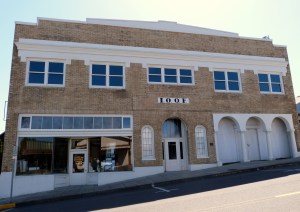
The Clatskanie IOOF Hall was once the center of social life in Clatskanie. (National Register of Historic Places)
Located at 95 S. Nehalem St., the building was designed by Portland architect Ernst Kroner, who designed the Portland IOOF Grand Lodge two years prior. The building was home to a movie theater, post office, dental and law offices, meeting spaces and more.
Social organizations were important in early Clatskanie life. This building hosted a chapter of the Independent Order of Odd Fellows, a nonpolitical, nonsecretarian international fraternity.
Today, the building’s importance to Clatskanie society has waned, but it remains intact as a testament to its significance.
Thomas J. Flippin House, Clatskanie
Located at 620 Tichenor St. in Clatskanie, the Thomas J. Flippin House is nicknamed “The Castle” thanks to its palatial exterior.
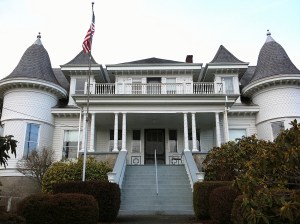
Nicknamed “The Castle”, the Thomas J. Flippin House in Clatskanie was once home to one of the city’s early pioneer families. (National Register of Historic Places)
Built in 1900 in the Queen Anne Revival style, it has 14 rooms and housed one of Clatskanie’s early pioneer families.
In addition to its architectural significance, the home was placed on the National Register of Historic Places in 1979 thanks to its association with the Flippins. James A. Flippin settled in Cedar Mill, laying down roots in Washington County. His son, Thomas J. Flippin, began his career as a skid greaser on a bull-team logging operation on the Columbia River.
Thomas J. Flippin continued to work in the timber industry, and had “The Castle” built to raise his family in.
Oregon-American Lumber Co. Mill Office, Vernonia
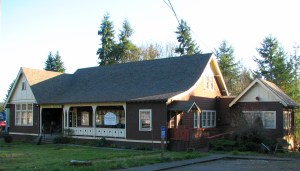
The Oregon-American Lumber Company Mill Office is the only remaining building of the company’s mill complex in Vernonia. (National Register of Historic Places)
Built in 1924 and placed on the National Register of Historic Places in 2002, this is the only remaining building of the Oregon-American Lumber Company’s mill complex, which once covered more than 100 acres in Vernonia.
Located at 511 E. Bridge St., the mill helped grow Vernonia at a time when Oregon was considered the most important timber manufacturing state in the country.
The Oregon-American Lumber Company was known for its innovations in timber manufacturing, such as kiln-drying and electricity sawmills.















